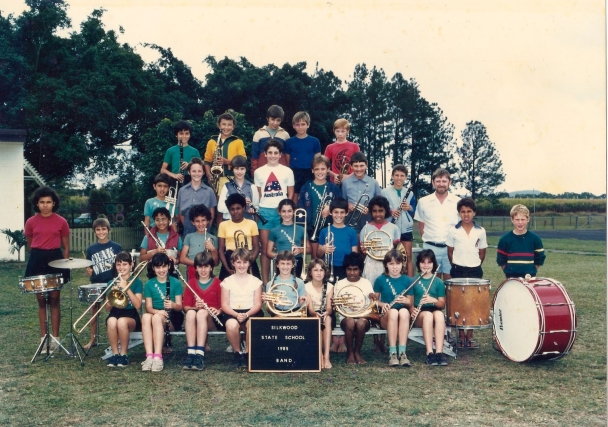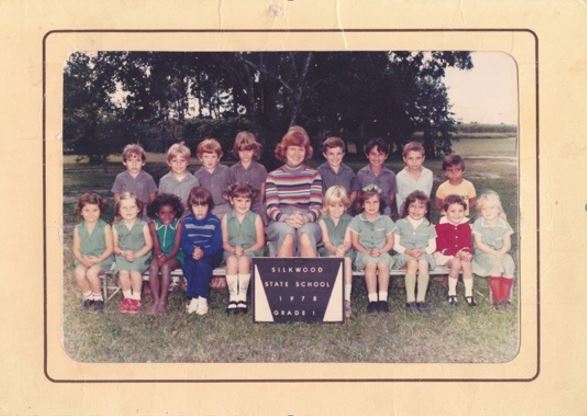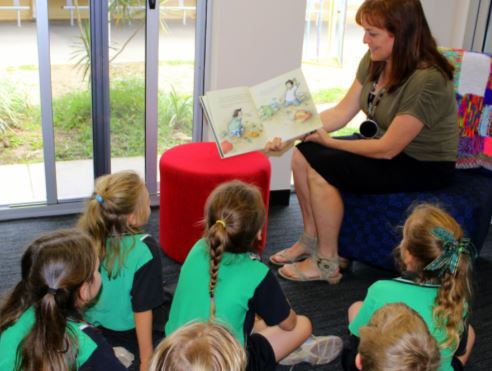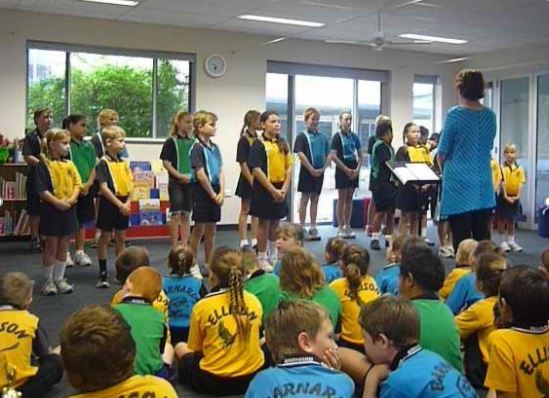Silkwood State School celebrated 100 years of quality education in 2016 with Centenary commemorations held at the school. Past and present staff, students and community members travelled from across Australia to attend this historic event. Today, in celebrating over 100 years, the school takes great pride in the remarkable successes of our Silkwood State School community.
Part of the success derives from the foundations of the school motto: Keep On Keeping On - giving our students every opportunity to strive for improvement, learn from setbacks and succeed.
The School has serviced the township of Silkwood and the surrounding sugar cane and banana growing areas since 1916 with numerous current students being 4th generation families in our school community.
Below is a condensed extract taken from the original full version of history written by Mr Bill McRobbie in Silkwood State School's 75th anniversary book. To view the entire extracted and condensed version compiled by Mr Jim Ferguson, please go to history of Silkwood State School (PDF 1.3MB).

Silkwood State School – the beginning
The first approach for a school at Silkwood was made by the Liverpool Creek Settlers' Association. In a letter dated Wednesday 17th April 1912, to the Department of Public Instruction, Brisbane. The Secretary, Mr M.J. McNamee, said the area had about fourteen children of school age, and sought information about formal application for a Provisional School. Then on Monday 6th May 1912, the Association again wrote to the Department of Public Instruction, referring by name to a proposed Liverpool Creek – Maria Creek School. This letter pointed out that there were then eighteen school-age children of parents permanently resident in the area that surveyors were engaged in the survey of the route of the North Coast Line, that the erection of central sugar mill was anticipated, and that lack of a school has led families to leave the area and others to refuse to settle.
Initial agitation for a school obviously proved fruitless. In any case, by 1915, it was a meeting of parents, and not the Association, that took up cudgels for a school at Silkwood. Writing to the Minister for Education on Sunday 14th February 1915, Mr A.J. Daveson, for the parents' meeting indicated that, "our member Mr Lennon who understands our district, to get a school" was being lobbied.
Political representation by parents for a school bore immediate fruit, and the Silkwood State School opened for lessons on Monday 28th August 1916 with Head Teacher, Miss Hannah Hogan from Mackay who boarded the A.J. Daveson family on the southern bank of Liverpool Creek.
From the first Silkwood State School Admission Register, with 11 original pupils for the first day followed by another 10 students with a fortnight. The end of 1916 saw the total enrolment rise to 24. The school grew steadily on its original site which was situated on Portion 75.
Silkwood State School – the move to a new site
By Sunday 10th March 1918, when the district suffered its most furious cyclone to date, the Silkwood State School had been in operation for less than two years. A telegram stamped "DETAINED BY INTERRUPTION" was sent to the Department in Brisbane by Miss Hogan, on Saturday 16th March. Miss Hogan was instructed to confer with the School Committee to see if temporary arrangements for carrying on could be made. In view of the extent of cyclonic devastation, it is evident that the resumption of school lessons could not be made. There were no lessons at Silkwood until Monday 16th September 1918 when Mr Kreuger took up duty. The District inspector of Schools, Mr Fowler also reported that Mr Kreuger had re-commenced school under a private house.
Although Crown approval through the Governor-in-Council was given on Thursday 9th May, 1918 on a new state school at Silkwood to replace that destroyed in the cyclone, it does not seem to have been very long before dissension concerning the site of the new building surfaced in the Silkwood community. Haggling by the Department of Public Instruction over the conditions for obtaining the proposed new school site caused further delay in construction. Meanwhile instruction continued under the residence of one of members of the School Committee. Bertha Muriel Smith expressed her concerns over the unsuitable nature of the temporary, teaching premises.
By the time working plans and specifications of the new Silkwood School were completed on Monday 19th May 1919, a detailed estimate of cost which included a concrete floor under the school and furniture etc., revealed that the expenditure of £798/0/0 would now be necessary. Obviously, work was undertaken without further delay because the new building on the new site was in use by Monday 30th August 1920 when an Inspector reported that the building was inadequate for the sixty-six pupils then enrolled. It was suggested that a suitable veranda be enclosed as temporary classroom accommodation.
No doubt further increases in enrolment occurred because by Wednesday 22nd June 1921, Mr William Harold Amundsen, Head Teacher, was complaining of lack of classroom space. An assistant teacher, Mr Reginald Joseph Hussey, was appointed to Silkwood by 1921; and by the end of the year approval had been granted for the erection of additions to the school. The completed building was ready for occupancy on Wednesday 4th July 1923.



Silkwood State School – between the wars and after
During the early 1920's, it also became evident that the working conditions at school were not the teacher's only problem. The school staff had much to contend with personally with teacher accommodation a major problem. It finally came to head in October 1922 when the family with whom the Head Teacher and his Assistant lived, refused to board them any longer. After much discussion and threats from the teachers to remove themselves to Mourilyan until accommodation could be found for them.
At last, on Friday 17th August 1923, the Governor-in-Council approved erection of a Teacher's Residence for the Silkwood State School. A memorandum dated Tuesday 8th April 1924 reported that the residence at Silkwood had finally been built. After more than twelve eventful years, the prolonged saga of a school for Silkwood and a residence for teachers had come to an end.
Enrolments between the wars saw a steady growth in school numbers and also the addition of an extra building on Monday 5th February 1934. Numbers were as follows:- 1929 – 65,1930 – 72, 1931 – 89. 1932 – 92, 1933 – 100, 1934 – 103, 1935 – 132 and 1936 – 165.
The growth of the school according to the local District Inspector was as result of "the great amount of road construction in the Silkwood district, so opening up the country for the development of the dairying and timber industries."
The last major additions to school buildings, another classroom and a teacher's room were also put into train at this time. These were in the course of construction at the outbreak of the Second World War. Obviously, support for Australia's war effort prevented the spending of limited government funds on further school extensions.
The Silkwood State School lost a significant number of its enrolment when at the beginning of 1948, the St John the Apostle and Evangelist Convent School opened. Such so that buildings and playground space were now adequate for immediate and future requirements only needing regular maintenance. It was not until, the late 1970's the age of the buildings and more modern teaching methods necessitated total school re-construction which also included a pre-school.


Silkwood State School – education in a modern era
In 2010 the school received major new infrastructure with the Building the Education Revolution Project. Funding provided Silkwood State School with a new library resource centre and multi-purpose undercover area. This new modernisation retained our strong community connection as it not only benefits students and teachers, but also the wider community with outside of school hours meetings, health and sporting programs. Sharing the facilities across the community has the benefit of enhancing education and wellbeing outcomes for our students and assisting in building connections and lifelong learning in communities.

